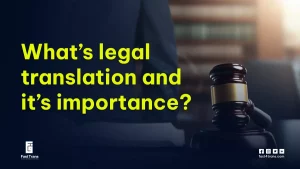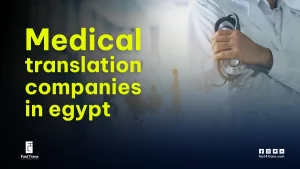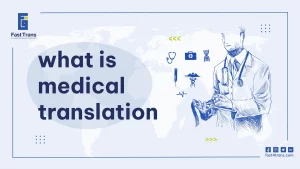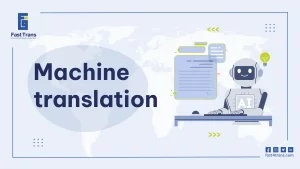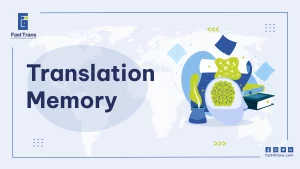Arabic subtitling translation is the art of converting spoken dialogue into readable Arabic text, capturing not just words but the emotional tone, cultural context, and essence of the content. This essential service bridges language gaps for Arabic-speaking audiences across films, TV shows, social media, and educational content, making it accessible and engaging.
By balancing accuracy with cultural relevance and adhering to space and timing constraints, Arabic subtitling enhances viewer experience, making content more inclusive, especially for those with hearing impairments, and expanding reach in a cost-effective, timely manner.
What is Arabic subtitling translation?
Arabic subtitling translation is the process of converting spoken dialogue from another language into readable Arabic text, displayed at the bottom of a screen.
But it goes beyond word-for-word translation. Arabic subtitling requires capturing the essence, tone, and emotion of the original content while ensuring the translation fits within a limited space and time frame. Additionally, it must account for right-to-left (RTL) text alignment and Arabic linguistic nuances.
Imagine watching your favorite foreign film or series. The Arabic subtitles don’t just convey what the characters are saying; they also help you understand cultural references, jokes, and the overall mood of a scene. That’s the magic of Arabic subtitling translation.
It’s used in:
- Films and TV shows
- E-learning and online educational content
- Social media platforms (Instagram, YouTube, TikTok, etc.)
- Online webinars and video conferencing
- Documentaries
A great example of Arabic subtitling is in Avatar. The film’s fictional language is translated on-screen, immersing the audience in the world of Pandora while maintaining accessibility for Arabic viewers.
Another remarkable example is Inglourious Basterds by Quentin Tarantino. The film’s multilingual dialogue, especially Christoph Waltz’s tense shifts between French and English, is enhanced by subtitles. In Arabic, careful subtitling is essential to preserve this linguistic tension while ensuring clarity for viewers.
Why is Arabic subtitling translation so important?
Arabic subtitling translation is crucial for preserving emotional depth, cultural context, and accessibility in content for Arabic-speaking audiences. It aids in bridging communication gaps for those with hearing impairments and expands the reach of digital content across the Arab world.
1. Conveying Emotions, Not Just Words
For example, when you watch a movie in another language, you’re not just following the plot—you’re diving into its world. Arabic subtitles do more than just tell you what the characters are saying; they convey the nuances, emotions, and cultural references that give the story depth in a way that resonates with Arabic speakers.
A well-translated Arabic subtitle ensures that the humor, tension, and drama are not lost in translation but are instead adapted in a way that feels natural and authentic. Without this careful adaptation, much of the essence of the content would be lost to Arabic audiences.
2. Helping Persons with Hearing Disabilities
However, the importance of Arabic subtitling goes beyond entertainment. It makes content accessible to millions of Arabic-speaking individuals who are deaf or hard of hearing, ensuring they can enjoy the same experiences as everyone else. Additionally, it serves as a powerful tool for Arabic language learners, helping them understand context, slang, and real-world dialogue in a way that textbooks can’t.
3. Accessibility of Social Media Content
For Arabic-speaking content creators, subtitling is a gateway to a broader audience. It allows them to reach viewers across the Arab world and beyond, expanding their impact and potential. In a region where digital content consumption is rapidly growing, Arabic subtitling translation isn’t just an option—it’s essential.
4. Maintaining Clarity, Above All
First and foremost, the core purpose of Arabic subtitling—whether in film, television, or online content—is to be as clear, concise, and effective as possible.
This means Arabic subtitles avoid overly complex language or jargon that could hinder understanding. Even when dealing with intricate subject matter, translators ensure clarity, making the content more accessible to all Arabic-speaking audiences.
Who uses Arabic subtitling services?
Arabic subtitling services are widely used by global entertainment platforms, educational institutions, businesses, NGOs, and content creators to cater to the large Arabic-speaking audience, enhance accessibility, and improve user engagement across various sectors. This includes film production, streaming services, marketing, healthcare, and tourism industries.
1. Film and Television Production Companies
Global media and entertainment companies producing films, series, documentaries, and television shows frequently rely on Arabic subtitling to reach the large Arabic-speaking audience. This includes content creators in Hollywood, Bollywood, and international film industries. With the MENA region’s significant consumer base, subtitling in Arabic allows production companies to expand their reach and increase viewership.
2. Streaming Platforms and Online Media
Streaming services like Netflix, Amazon Prime Video, and Disney+ often offer Arabic subtitles to cater to users across the MENA region. With streaming platforms gaining immense popularity worldwide, Arabic subtitling ensures that content can be understood by Arabic-speaking audiences, enhancing user experience and global appeal. Platforms also use Arabic subtitles for subtitling non-Arabic content to meet the demand for diverse linguistic needs.
3. Educational Institutions
Educational content, ranging from online courses to documentaries and e-learning materials, is increasingly being translated and subtitled in Arabic. With the growing number of Arabic-speaking students worldwide, educational institutions and online learning platforms use Arabic subtitling to ensure that students can comprehend lessons, lectures, and tutorials in their native language.
4. Corporate and Marketing Organizations
Businesses, multinational companies, and marketing agencies often use Arabic subtitling in training videos, promotional content, webinars, and advertisements to target the MENA region. Subtitling helps improve the clarity of messaging, enhances brand recognition, and engages Arabic-speaking consumers more effectively. It’s also essential for global businesses looking to localize their content for Arabic markets.
5. Government and Non-Governmental Organizations (NGOs)
Governments and NGOs engaged in humanitarian efforts or international diplomacy often use Arabic subtitling services to make their communication more inclusive. From government speeches and diplomatic discussions to public service announcements and advocacy campaigns, Arabic subtitling helps ensure that key messages reach Arabic-speaking populations, especially in regions where the language is dominant.
6. Video Game Developers
Video game localization is another industry that uses Arabic subtitling services to make games accessible to Arabic-speaking players. As the video game market expands in the MENA region, Arabic subtitles are a vital aspect of localizing content. Players in this region often prefer games with Arabic language options, including subtitles, to enhance their gaming experience.
7. YouTubers and Social Media Influencers
Content creators on platforms like YouTube, Instagram, and TikTok also use Arabic subtitling services to reach wider audiences. By adding Arabic subtitles to their videos, influencers and vloggers can connect with Arabic-speaking fans, making their content accessible to a broader demographic. Subtitling is also a great way to increase engagement, as many viewers prefer watching videos with subtitles in their native language.
8. Healthcare and Medical Professionals
In the healthcare sector, Arabic subtitling services are increasingly being used to make medical information more accessible. Hospitals, clinics, pharmaceutical companies, and health organizations create informative videos, instructional materials, and awareness campaigns with Arabic subtitles to provide healthcare guidance to Arabic-speaking communities. Subtitles help overcome language barriers in critical healthcare communication.
9. Religious Organizations
Religious groups, including those involved in broadcasting sermons, educational programs, and religious services, often use Arabic subtitles. As Arabic is the language of the Qur’an, many religious organizations use subtitling to make their content more accessible to Arabic-speaking followers around the world. Subtitling in Arabic also aids in reaching a diverse audience and helps spread religious teachings.
10. Travel and Tourism Industry
In the travel and tourism sector, Arabic subtitling is frequently used for promotional videos, destination guides, and travel documentaries. Tourism boards and companies targeting travelers from Arabic-speaking countries include Arabic subtitles to enhance the appeal of their content and reach Arabic-speaking tourists who may not be proficient in other languages.
Challenges of Arabic Subtitling Translation
Arabic subtitling faces challenges such as space and timing constraints, cultural adaptation of humor and idioms, and maintaining emotional impact, while also adhering to technical requirements like font clarity and right-to-left formatting. Subtitlers must balance accuracy, creativity, and platform guidelines to ensure effective communication.
1. Constraints on Character Count, Spacing, and Timing
Arabic subtitling faces unique challenges due to the language’s structure and script. Arabic text is often longer than its English counterpart, which can lead to space constraints in subtitles. Additionally, Arabic is written from right to left, requiring adjustments in formatting to ensure readability. Subtitles must appear and disappear in sync with the dialogue while remaining concise and clear for the audience. Balancing these factors is crucial to delivering an accurate and engaging translation without overwhelming viewers.
2. Cultural Context, Nuances, and Humor
Arabic is a language rich in cultural expressions, idioms, and proverbs that don’t always have direct equivalents in other languages. When a speaker uses culturally specific phrases, the subtitler must find a creative way to convey the intended meaning while ensuring clarity for Arabic-speaking audiences. Humor is particularly challenging, as jokes that rely on wordplay or cultural references may not translate well. Subtitlers must skillfully adapt humor, idioms, and references to make them relatable and engaging for Arabic viewers, sometimes by replacing them with culturally appropriate alternatives.
3. Keeping the Tone and Emotion Alive
Arabic has a wide range of expressions that convey emotions with deep intensity. However, differences in sentence structure and word order can make it difficult to maintain the same emotional impact as the original dialogue. Whether it’s sarcasm, irony, or heartfelt emotion, finding the right words in Arabic while keeping the subtitles brief is a challenge. A successful Arabic subtitler ensures that the audience experiences the same emotional depth as intended in the original script.
4. Technical Requirements
Each streaming platform or broadcaster has specific guidelines for subtitles, and Arabic subtitling comes with additional considerations. Arabic fonts must be chosen carefully to ensure clarity and readability, especially given the script’s curves and diacritical marks. Placement of subtitles must also take into account the right-to-left reading direction to avoid formatting issues. Additionally, there may be content regulations in Arabic-speaking regions regarding sensitive topics, requiring subtitlers to make careful localization decisions while staying true to the original content.
Benefits of Arabic subtitling
Arabic subtitling breaks language barriers, enhancing accessibility for Arabic-speaking audiences and the hearing impaired. It increases engagement by making content easier to follow in noisy environments or without sound.
1. Transcending Language Barriers
In our globalized world, the chances of encountering films, videos, or content that’s not accessible in your native language are becoming narrower than ever, especially with widely spoken languages like Arabic. Arabic subtitling allows Arabic-speaking audiences to enjoy foreign films and videos without facing a language barrier, making it easier than ever to experience content in their preferred language.
The ability to watch foreign films with Arabic subtitles has never been so accessible, opening up a new world of entertainment!
That’s the magic and power of Arabic subtitling.
2. Inclusive for Hearing Impaired People
Arabic subtitles also serve an important role for those with hearing impairments or anyone who has difficulty understanding spoken audio. With Arabic subtitles, viewers can follow along with the content easily and without missing any important information, whether they prefer to mute the sound or simply have a clearer understanding of the dialogue in their native language.
3. Boosting Engagement and Audience Reach
Imagine coming across a cool video on Instagram, and you wish it had Arabic subtitles so you could follow along without needing to turn on the sound. Arabic subtitling enhances engagement, making content accessible to Arabic-speaking audiences in noisy environments or when they prefer not to hear extra sounds.
Difference between Captions and Subtitles
Captions are a transcription of speech and it is made for audiences who can’t or don’t want to follow the audio.
Captions do not denote translation. while subtitling is a translation of the audio from one language to another.
Read more: A Comprehensive Guide to Arabic Transcription
What are Closed and Open Captions
Closed captions are audio transcriptions that include noises or music happening in the background. They are optional and can be turned off.
While open captions are integrated into the video, and can’t be turned off.
Subtitling translation vs voiceover translation: What’s the difference?
Subtitling and voiceover translation differ in format, experience, cultural nuance, and cost. Subtitles display text while keeping original audio, offering a more cost-effective and quicker solution, while voiceovers replace audio with translated speech, providing a seamless but pricier and time-consuming experience.
1. In terms of format
Subtitling Translation
Subtitles are written text displayed at the bottom of the screen that translates the spoken dialogue. Viewers read along with the visuals, allowing them to follow the original audio while understanding the dialogue in their language.
Voiceover Translation
- No text on the screen to be read.
- A voice actor will speak the translation. either to fully replace the original audio or overlay it.
You can find this happening often with National Geographic documentaries where the voiceover translation can sometimes delay, lag, for a fraction of a second and you can hear the original audio or narration in another language.
2. In terms of the overall experience
Subtitling Translation
- Allow viewers to hear the original actors’ voices and emotions, which can enhance the authenticity of the experience.
- requires the audience to read and watch simultaneously, which might be challenging for some.
Voiceover Translation
- Voiceover provides a more seamless experience since viewers hear the content in their language without needing to read.
This can be especially beneficial for those who prefer listening to reading or for audiences who might struggle with reading speed.
In some cases, the voice acting might not be appealing to the audience, which can lead to them not watching the film/video entirely.
3. Cultural Nuances and Tone
Subtitling Translation
- Phrases are condensed and put in most minimal way.
- Details are sacrificed.
- Still maintain the original tone, cultural context, and pacing.
Voiceover Translation
- Good voiceover translation fully conveys the tone and emotions without interruptions.
However, some actors might not match the original tone which can deviate a little from the original audio message or the overall effect it can have on the audience.
Again, national geographic documentaries are a perfect example of this.
Go watch an episode of Airplane Crashes to get one of the best voiceover translations ever.
These documentaries or episodes rely heavily on storytelling, and human emotions because they’re about true airplane crashes that are charged with feelings like fear, humanity, gratitude, and panic that must be conveyed.
4. In terms of time & Costs
Subtitling Translation
Generally, subtitling is quicker and less expensive to produce compared to voiceover. It doesn’t require hiring voice actors or studio time for recording, making it a cost-effective solution for many types of content.
Voiceover Translation
Involves high costs and longer production times
The process goes through many stages. First the long recording session, and then these recordings are edited so there are many players in the team until the final audio is produced a
Of course, this is a whole other project that could be much bigger than the subtitling one.
Voiceover usually involves higher costs and longer production times. You need voice actors, recording sessions, and sound editing, which can add to the overall expense. However, for some audiences, the investment might be worth it, especially for content that benefits from a more immersive experience.
What types of content need subtitles?
Subtitling is no longer limited to films streamed in the cinema theatre, or to online streaming platforms. They transcend that and grow into a multi-industry field that is pursued by businesses of different kinds to grow their brand.
Wherever there is video content, there is a need to make it accessible for different tongues, and therefore the need for subtitle translators grows.
Below are some of the types of subtitle translation:
- Online educational content and courses (Coursera, Khan Academy, and Udemy)
- Foreign Films
- Social media videos and reels
- Webinars
- Speeches
- Youtube Videos
- Journalism Videos and Features
- Podcasts
- Digital Art installations
- VR (Virtual Reality) Content
Best Practices for Arabic Subtitle Translation
Effective Arabic subtitle translation prioritizes localization, ensuring cultural relevance and audience-specific context, while preserving tone and style. It emphasizes brevity, readability, and adherence to rules, with tools and learning from other translations enhancing quality.
Here are important best practices to keep in mind during your next Arabic subtitling project:
1. Localization is KEY
Localization in Arabic subtitling goes beyond just translation. It involves adjusting elements like date and time formats, and adapting words or expressions with cultural significance to fit the Arabic-speaking audience.
For example:
- The date format in Arabic-speaking countries may differ depending on the region. In most Arab countries, the day-month-year format is preferred, while other places might follow a different structure.
Localization requires an understanding of the target audience. Are they from the Gulf region, the Levant, or North Africa? Are they familiar with the dialect used? What are the local cultural or religious references that need to be considered? You must immerse yourself in the audience’s context to ensure the translation is culturally appropriate and does not unintentionally offend.
2. Preserve Tone and Style
Preserving the meaning, tone, and style of the original dialogue is essential, especially in Arabic, where nuances in tone can differ greatly. Whether it’s humor, formality, or emotional expression, the translation should convey the same feeling and atmosphere as the original content.
Language in Arabic holds significant weight in visual media, and it is important to retain the humor, seriousness, or cultural subtleties of the original text, ensuring that the translation resonates with Arabic-speaking viewers.
3. Keep Subtitles Concise and Readable
Arabic subtitle translators must be concise. The general rule is to limit subtitles to two lines on screen, which means balancing meaning with brevity while maintaining context-specific translations. Arabic text can often be longer due to the structure of the language, so it’s essential to focus on clarity and brevity to ensure the subtitle remains readable and doesn’t overwhelm the screen.
4. Learn by Noticing How Others Translate Subtitles
Arabic subtitle translation is an evolving skill. By watching well-translated Arabic content, you can pick up valuable techniques and insights. Pay attention to how other translators handle challenges such as humor, idiomatic expressions, or culturally specific references. Learning from other translators’ choices helps refine your own style and avoids common pitfalls.
5. Know Subtitling Rules by Heart
Subtitling follows specific rules that are crucial, especially in Arabic. It’s important to be familiar with these subtitling guidelines to ensure the final product is polished. Below are some key rules for Arabic subtitling:
- Quotes: Translate direct quotes without paraphrasing (word-for-word).
- Speaker Identification: If multiple speakers are talking and the camera cuts between them, you can use the speaker’s name in brackets to avoid confusion. For example:(عمر) أين ذهب والدنا؟(سلمى) لم يقل
- Music Lyrics: When lyrics are sung, use the icon (♪) at the beginning and end of the song.
- Tone Indicators: Don’t hesitate to include punctuation marks like question marks or exclamation points to indicate the tone of the speaker’s voice in Arabic.
- Consistency: Use consistent terminology throughout the subtitles, especially for words with multiple meanings in Arabic.
- Speech Interruptions: Use hyphens (–) or long dashes (—) to indicate interruptions in speech.
- Ellipsis: Use ellipses when there’s a pause or trailing off in speech.
- Quotation Marks: Use quotation marks when characters are reading or quoting from a book, poem, or letter.
Use Subtitle Software: Arabic subtitle translation can be time-consuming, but using subtitle software can automate many aspects of the process. Tools like subtitling software help streamline the workflow and improve efficiency in managing timing and text.
Let’s explore some of the frequently used software for subtitle translation below.
Frequently used software for Subtitle Translation
Subtitle translation tools streamline the process of creating and editing captions across various media formats. Popular options include Subtitle Workshop, Ayato 3, Subtitle Edit, OmegaT, and SubtitleBee, offering user-friendly interfaces, extensive language support, and AI-powered capabilities.
1. Subtitle Workshop
One of the leading subtitle translation software. It’s free and has a user-friendly interface, spell checker, and text/time synchronicity tool.
2. Ayato 3
Provided by Nina Solution, It’s the favorite subtitling tool for many translators around the world. Ayato 3 is suitable for both open and closed subtitles. It supports a variety of media and file formats, ensuring compatibility with all production and delivery requirements.
3. Subtitle Edit
A free tool that has multiple capabilities and features with an easy layout. It supports many languages. Its features range from translation to editing, and splitting subtitles. It could also work with several formats.
4. OmegaT
Omega T is one of the oldest open-source translation software that supports translation memory, in addition to a variety of file formats like SRT files.
5. SubtitleBee
One of the leading subtitling service providers. SubtitleBee is suitable for all social media platforms. It functions in 120+ languages and translates video using Artificial intelligence in a matter of seconds.
Read More: importance of Arabic subtitling and it’s Advantages
What to consider when Arabic translating subtitles?
As an Arabic subtitle translator, there are 3 things to keep in mind when translating video content.
Subtitle translation differs from other kinds of written translation because it is controlled by time and space. Translating a social media post is different from translating a reel, the latter must be quick and immersive although both of them could function on the same social media platform.
For these reasons, and more, here are 3 things to consider with your Arabic subtitle translation.
1. Keep technical aspects in mind
Technical aspects refer to the space a subtitle has on the screen, the duration for which it will be displayed, and the possible expansion or reduction of text when translated from one language into Arabic.
This necessitates the subtitles to be adapted to these technicalities, because at the end of the day, what matters is for the audience to grasp the meaning without compromising the flow of the video.
Technical aspects involve the space taken by subtitles. As a general rule, each subtitle line should contain around 35 characters.
There are many things to do with language when being mindful of space:
- Look out for fillers or repetition.
- Change grammatical structures to make the text more concise.
- Use antonyms to create shorter sentences.
- Merge sentences where appropriate to fit the space.
2. Accuracy of Subtitle timing
It’s needless to say timing is crucial for the quality and ease of reading of subtitles. The subtitles must appear as soon as the speaker talks and disappear shortly after the speaker finishes.
3. Testing the quality
Before publishing or submitting the project, it needs to run through a quality assurance phase to review it and make sure it is free of technical or contextual mistakes. In this process, seeking the help of a native Arabic speaker can serve to avoid massive localization errors.
One recent example of such errors was reported by the Korean stand-up comedian and social media figure, Youngmei Mayer, who protested the poorly translated subtitles of the Korean series Squid Game that was streamed on Netflix in 2021. She pointed out how the translators completely changed what the characters originally said or left out some expressions significant to Korean culture. Her remarks sparked a debate about the role of subtitling in the media world.
That left her upset, feeling that her culture was unheard and unseen by a media giant like Netflix.
You can read her remarks on Twitter to know more about the incident on one hand, and to understand the power of localization in Arabic subtitling on the other.
Are Arabic subtitles right for my video project?
Arabic subtitles are a cost-effective way to expand your video’s reach to Arabic-speaking audiences while preserving the original tone and emotions. They offer accessibility benefits, making content more engaging for viewers with hearing impairments or language barriers.
Do you want to reach more audience?
If you want your content to be accessible to a broader audience, especially Arabic speakers, subtitles in Arabic are a fantastic choice. They break down language barriers, allowing your content to reach people across Arabic-speaking regions. Plus, they’re a lifeline for those who rely on them to fully engage with your content, including those with hearing impairments.
Is preserving the original tone crucial?
Arabic subtitles are perfect if the original audio is a key part of your video’s appeal—like in films, interviews, or videos where the voice and tone of the speaker add depth. They provide an accurate translation while allowing the viewer to connect with the speaker’s emotions and intentions.
Is the budget/time limited?
Arabic subtitles are generally quicker and more cost-effective to produce than voiceovers. If you’re working with a tight budget or deadline, Arabic subtitles can be a smart way to deliver your message without compromising on quality.
What does your audience prefer?
Consider your audience’s preferences. Many Arabic-speaking viewers prefer reading subtitles, especially if they enjoy hearing the original language. However, if you’re targeting younger audiences or viewers who may struggle with reading speed, you might want to explore voiceover options as an alternative.
Fast Trans is your best choice for subtitling translation
While subtitling sounds all fun and games, yet, the tricky part is it should be handled by professionals who understand the language pair fully, and the target audience’s culture.
Choosing subtitling is probably a good decision, because how can it go wrong? Another right decision is to take us take the lead on it! We love this…
Feel free to check out our comprehensive translation services here, or reach out to our team to get a quick translation quote.
Conclusion
Arabic subtitling translation is the process of converting spoken dialogue into Arabic text displayed at the bottom of a screen. This translation goes beyond simple word-for-word conversion, capturing the emotional tone, cultural nuances, and context of the original content. The process involves ensuring clarity and accuracy while adhering to space and timing limitations, as well as right-to-left text formatting. Arabic subtitling is essential for making foreign content accessible to Arabic-speaking audiences across various media, including films, educational videos, and social media platforms, while also improving engagement and helping individuals with hearing impairments.
This service is crucial for expanding content reach and making it more inclusive, especially in the growing digital space. Arabic subtitling supports various sectors, such as the entertainment, education, healthcare, and tourism industries, by providing a means to engage a large Arabic-speaking audience. It ensures the original tone and emotional impact are maintained while being culturally relevant and accessible. Due to its cost-effectiveness and speed compared to voiceover translation, Arabic subtitling is a popular choice for content creators aiming to connect with broader audiences without sacrificing quality or meaning.


